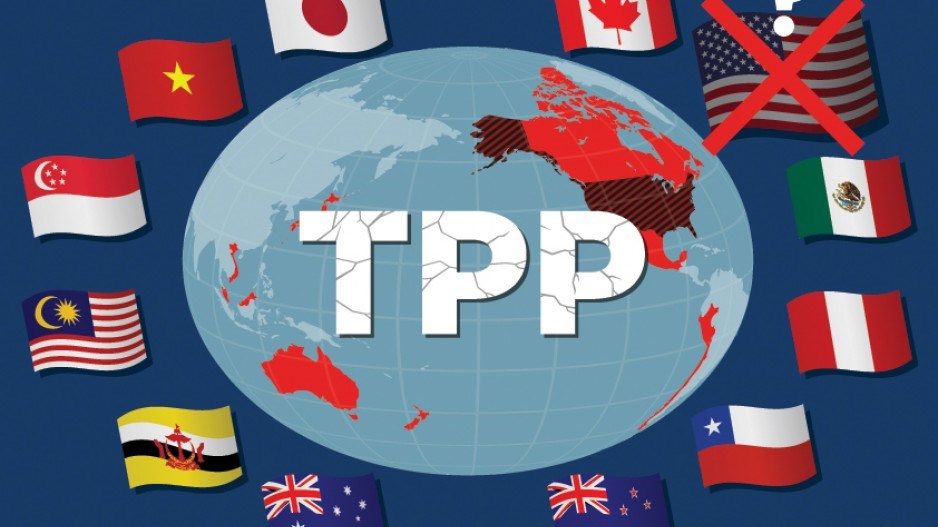Canada has reached an agreement with 10 other countries on a revised Trans-Pacific Partnership (TPP), a move that will likely strengthen Ottawa’s hand in its ongoing North American Free Trade Agreement (NAFTA) negotiations with Washington.
That is the observation of one Vancouver academic observer, who adds that the agreement may signal Canada’s shifting foreign strategy on leading a new kind of economic globalization as the Canadian economy becomes more reliant on international trade.
“The agreement gives [Canadian Prime Minister] Justin Trudeau a certain leadership role in this new type of globalization,” said Gerardo Otero, professor of international studies at Simon Fraser University. “It’s free trade with some domestic protection involved; it’s not about an all-out globalization, which was the name of the game in the 1980s. This is globalization with a human face.”
Canada’s decision to back out of an announcement regarding the TPP at the last minute in November in Vietnam reportedly angered Japan, which has been leading the negotiation efforts since the United States pulled out of the deal last year.
Previous reports said Tokyo was so upset with Ottawa that it would consider moving forward quickly with a 10-member TPP bloc, leaving Canada behind.
The TPP was originally part of former U.S. president Barack Obama’s pivot-to-Asia strategy linking 12 countries (including two of the world’s three largest economies in Japan and the United States) to create an economic zone to advance global trade regulations and, in some views, to rival China’s meteoric rise as a global market force.
That deal was originally signed in early 2016 after up to eight years of negotiations, but it was scuttled by current U.S. President Donald Trump when he pulled the United States out of the deal. The remaining 11 countries decided a few months later to revive the TPP without U.S. involvement, an initiative dubbed TPP-11 to reflect its new membership numbers.
Back in November, Japanese Consul General to Vancouver Asako Okai said the TPP would signal closer relations between B.C. and Japan, with education and cultural exchange as one sector where she would see the most promise.
“We are trying to double the number of foreign students studying in Japan, as well as having more Japanese students going abroad, and there’s a lot of potential for B.C.,” Okai said. “With the Olympics happening in 2020 in Tokyo, we are welcoming the world, and we need the resourceful talents from all over the world, and I believe B.C. can provide some of the best educational resources for our youth coming abroad. That’s on top of Canadian youth who will benefit by coming to Japan.”
Reports indicate that Canada was able to iron out several concerns between November and now to agree to TPP-11, including a suspension of investor-state dispute settlement mechanisms that would allow a foreign company to sue Canadian governments in the case of a breach of contract.
“That move preserves the sovereignty of Canada as a country, so it’s absolutely the logical thing to do,” Otero said, adding that Ottawa might also have secured more lenient intellectual property rules that would limit the influence of large pharmaceutical companies in Canadian markets.
He also noted that a higher percentage of Canada’s GDP now depends on foreign trade – roughly 60%, compared with about 40% in the 1980s – and Canada’s about-face on the TPP might reflect Ottawa’s concerns about NAFTA’s uncertainty, as well as the negotiation of other major deals such as a bilateral free-trade agreement (FTA) with China.
NAFTA negotiations resumed in late January, and many analysts are wary of the United States possibly pulling out of the deal completely.
Meanwhile, Trudeau’s December visit to Beijing failed to yield an official launch to bilateral FTA negotiations, and the Vancouver summit on North Korea – co-hosted by Canada and the United States and derided by China as illegitimate – might have further cooled relations with Beijing.
“You have to hold on to something that gives Canadian businesses international markets to sell into,” Otero said. “Canada’s niceties toward Washington and the Trump administration on NAFTA don’t seem to have worked, so Trudeau appears to be going in a different direction.”
Otero noted that Canada launched wide-ranging trade complaints against the United States in early January at the World Trade Organization, which could signal Ottawa’s willingness to use the certainty of TPP to leverage NAFTA negotiations or safeguard against the uncertainty of the North American situation.
“The United States has to understand that, for Canada, the U.S. will always be the most important market,” he said. “But it’s also not the only market. Unlike 25 years ago, when there are not many alternatives taking part in global trade, globalization has made other countries more friendly, and there are more partners out there. It’s a fantastic time for Canada to diversify [its] partnerships, regardless of what happens with NAFTA.” •




